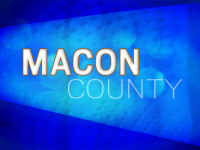Tourism industry has to market a moving target
Tourism leaders in the mountains agree they’ve got to re-invent their marketing tactics over the next decade to stay competitive. Apparently, there are a multitude of opinions on how to do that.
When we ran a story in last week’s issue called “Tracking WNC’s tourists,” (http://www.smokymountainnews.com/issues/06_10/06_30_10/fr_visiting_smokies.html), we heard lots of different ideas on who is coming to the mountains and what they want to do. After reading that story and looking back through our archives at other tourism-related stories we’ve done over the years, two points stood out. One, dependable market research on WNC’s tourism trends simply does not exist; two, a new brand of active, older visitor who wants a full slate of nonstop activity is replacing the tourist of decades past who came for relaxation.
The second point may be the most relevant. In year’s past, tourism officials here touted the middle-aged, working families with young children who would spend long weekends in small hotels, visit the Great Smoky Mountains National Park for a day of hiking and a picnic, then go back to their hotel. The next day a visit to Ghost Town might highlight the day, perhaps with dinner out afterward.
Of course, the affluent country club set and the second-homeowners were mixed in, but marketing to those segments was pretty straightforward.
But those days are long gone. I happen to know about this first because I’m one of those new families. With three kids of different ages in tow and my own interest in biking, hiking, rafting, etc., my family packs a full day in during our vacations. I’m 50, and I still relish a 15-mile mountain bike ride, perhaps a hike after lunch, then dinner out. I’m also looking for cultural attractions to provide my children — and myself — with any kind of educational experience that’s available. When we travel with our kids, we go from the time we get up until it’s bedtime.
In an age when most of us lead sedentary work lives, relaxation means getting out and doing stuff. It’s both cathartic and energizing to stay on the move during vacations.
This kind of tourist is also trying to get their kids interested in the outdoors and activities. They are looking for a few days away from television, video games, and the organized sports activities that run their daily lives and that leave many children completely ignorant of nature.
I think keeping these families coming to the mountains won’t be that difficult, it’s just going to take more sophisticated targeting of “micro” groups. A good example is what Julie Spiro and the Jackson County Travel and Tourism Association has done with its fly-fishing map to Jackson County. They went after a specific sector of the travel market, and their investment in this map has led to free publicity from articles that have appeared in a host of publications.
That kind of effort to appeal to different groups —skiers, whitewater enthusiasts, railroad buffs, golfers, bikers, motorcyclists, anglers or hikers — is probably what is changing the most. Those folks are getting their information in lots of different places. It is going to take a constantly evolving marketing approach that encompasses a variety of media.
The reason no one has the answers is that there is no one right answer. In the old days, it was a print and television advertising campaign that changed little from year to year. That just won’t work anymore.
The shortage of marketing research about Western North Carolina is a much more vexing problem. I’ve been covering tourism here for almost 20 years, and have been hearing the same refrain: tourism leaders need data, but no one has found the money or a way to obtain it. A few studies have been done, but the information is quickly outdated and only useful to particular groups.
The money is the big issue. Investing in research takes away from the budget to actually do marketing. Any tourism entity that takes this approach is in danger, in the short term, of losing market share to those who are still spending all their money on advertising.
There is really only one way to get this information: it has to be a regional effort funded by some entity like AdvantageWest. If tourism is our biggest industry, it seems money spent grading industrial sites or affixing tax breaks to large businesses might be better invested in an ongoing market research program to help tourism leaders keep their eye on the ball.
I’m not talking about a one-time effort, but an ongoing market research program to determine who our customers are. It will take hundreds of thousand of dollars, but it might be the best money ever spent.
Accomplishing this will take a united effort from tourism leaders. This won’t be a panacea that will make all of the tourism industry’s troubles go away. No, it’s about gathering useful information so we can at least stay in the game in this fast-changing economy.
(Scott McLeod can be reached at This email address is being protected from spambots. You need JavaScript enabled to view it..)





